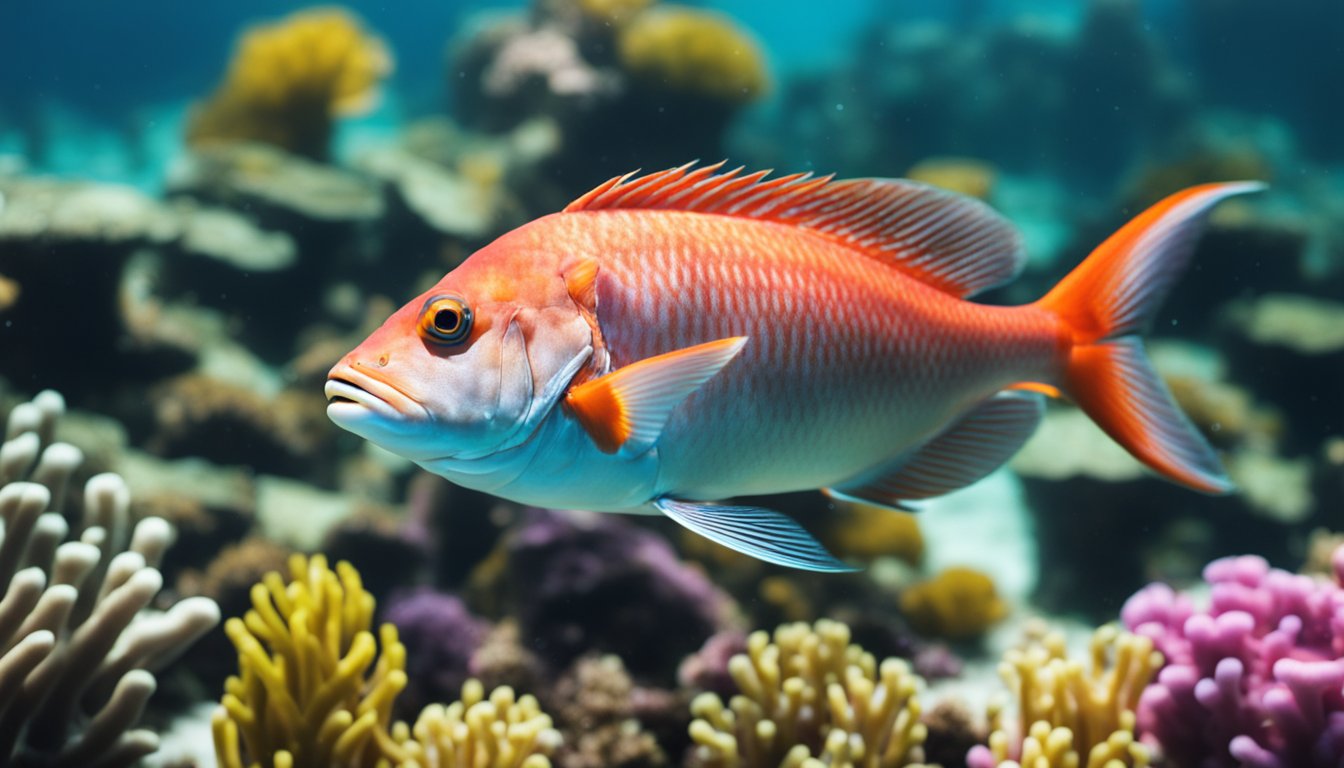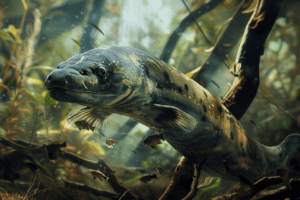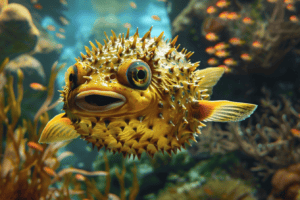Hey there, curious friends! We’re about to dive into the amazing world of red snappers, a fish that’s as colorful as its name suggests.
Picture a fish with a rosy red color, an almond body shape, and bright red eyes—that’s our red snapper!
These fish are not just pretty to look at; they’ve got some pretty cool secrets under their scales.

Red snappers are super interesting creatures that hang out in the warm coastal waters of places like the Atlantic Ocean and the Gulf of Mexico.
They love living near reefs where they can find lots of food to munch on.
We might know red snappers from seafood menus, as they’re quite popular for their delicious taste, but there’s so much more to learn about them.
Did you know that red snappers can grow to be about 24 inches long? That’s as big as some of our dogs!
They’re also really important in their ocean home as they help keep the ecosystem balanced by being top predators.
So, let’s get ready for some fun red snapper facts that will help us understand these fantastic fish even better.
Discovering the Red Snapper

Hey there! We’re about to dive into the world of a really cool fish called the red snapper.
Let’s find out what makes this fish special, where it lives, and all about its life.
What Is a Red Snapper?
Red snappers, or Lutjanus campechanus, are pretty amazing fish.
They have a standout light red color with more intense hues along their back.
A full-grown red snapper can be quite big, so don’t be surprised if you find one that’s about as long as a baseball bat!
Their body is covered in scales, and they have a spiky dorsal fin on top that looks a bit like a mohawk.
These spines are part of what makes a red snapper easy to recognize.
Where Do Red Snappers Live?
If we go on an underwater adventure in the Gulf of Mexico or along the southeastern Atlantic coast of North America, we might find red snappers hanging out in their home.
They love places like reefs, wrecks, and ledges.
These areas are where red snappers spend most of their time because the nooks and crannies are perfect for finding food and staying safe from bigger fish.
The Life of a Red Snapper
Living for up to 50 years, red snappers have an amazing life under the sea.
When they’re just tiny fish, they stay in groups called schools, which is like having a big group of fishy friends.
As they grow up, they tend to stick close to their favorite spots like coral reefs and deeper waters because that’s where they find the tastiest snacks.
Reaching sexual maturity takes time for red snappers, sometimes as long as two to five years.
When it’s time, these fish gather together in big groups for spawning, which is when they release eggs and sperm into the water to create the next generation of snappy red snappers.
It’s kind of like a huge birthday party for future baby fishes!
And did you know there are other snapper cousins out there? The mangrove snapper and mutton snapper are also part of the snapper family.
Keep an eye out for them when exploring the ocean from Massachusetts all the way down to the warmer Gulf waters.
Conservation and Interaction with Humans

Hey there, smart cookies! Did you know that the way we fish and enjoy our red snapper meals has a big impact on their life in the ocean?
Let’s find out how humans and these snappy fish get along.
Fishing and Conservation Status
Northern red snappers are not just cool to look at, but we also love to fish for them. They actually have a special status when it comes to conservation.
These fish are considered to be of “Least Concern” according to the IUCN 3.1, but we’ve got to keep an eye on them to make sure it stays this way.
Overfishing has been a problem in the past because red snapper tastes so good and is super popular with us humans.
- Fishing Regulations: To protect these fabulous fish, there are fishing regulations in place with rules like catch limits and minimum size.
- Conservation Efforts: We’re also using cool spots like shipwrecks and oil rigs as artificial reefs to give red snappers more places to hang out and to help increase their numbers.
Red Snapper in Cuisine and Culture
When we talk about the red snapper’s place at our dinner tables, we’re talking about a fish that’s not just yummy but has a big role in food culture too, especially where the sea is a big part of life.
These fish have firm, white flesh that holds up well when we’re grilling, baking, or frying, and are known for their nutty flavor.
- Cuisine: In restaurants across the coastal regions, from the Caribbean Sea to the Atlantic coast, red snapper is a big deal.
- Cultural Significance: The fish has even scooped up some cool nicknames in different languages, like huachinango or chillo in Latin American Spanish.
So, remember, our red snapper friends are counting on us to fish responsibly and enjoy their delicious taste without taking too many out of our beautiful oceans!










Add Comment